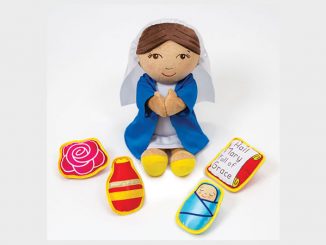
Welcome to this installment of Entering Through Their Door & Knowing the Age Group You Teach, a series in which we look at developmental stages of our learners. St. Ignatius of Loyola said that, when teaching or speaking to a group, it is always best to “enter through their door, but be sure to leave through your door.” His advice is that we need to take learners where they are and move them to the next step in their journeys. In our first installment, we looked at early childhood (preschool and kindergarten). In this post, we explore the development of children in the primary grades (1–3), or ages 6–9, which includes for many children First Reconciliation and First Eucharist.
In many ways, this age group can be thought of as the “golden age” of childhood. That’s not to say that teaching this age group comes with no challenges.
In general, children at this age:
- are filled with curiosity.
- are eager to explore the world around them.
- are experiencing rapid growth.
- have endless imaginations.
- have a natural sense of wonder.
- have boundless energy.
- are just beginning to form a conscience.
- are the center of their own world.
- are motivated to do good and avoid punishment.
- need a good deal of affirmation, security, and structure.
- are capable of reflecting for brief periods of time.
- can take simple prayers to heart (to memory).
- can pray spontaneously.
- are naturally drawn to ritual.
With that as a background, consider using the following activities and methodologies, which work well with children in primary grades:
- storytelling
- games
- rituals
- brief guided reflections (5–6 mins)
- drawing, coloring, painting, and making crafts
- dramatizing
- memorization
- activity sheets
- singing and dancing
- puppets (finger, sock, or hand)
- learning stations
Loyola Press faith formation resources pay attention to methods most effective for children in each grade. Be sure to take a look!
In addition to what I provided above, what other characteristics would you add to describe children in primary grades? What other activities or methodologies work best with this age group?





Good article, Joe. Short, sweet, simple. I passed it on to our catechist in the primary levels. Grace and peace to you as you keep on doing the good work you’re doing!
Thanks, Christina! I hope your catechists find it helpful!